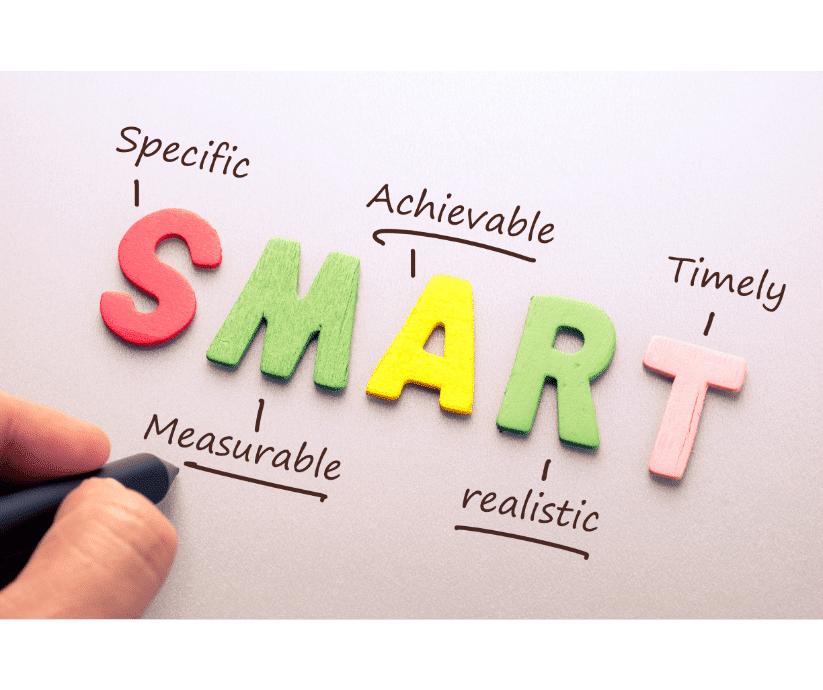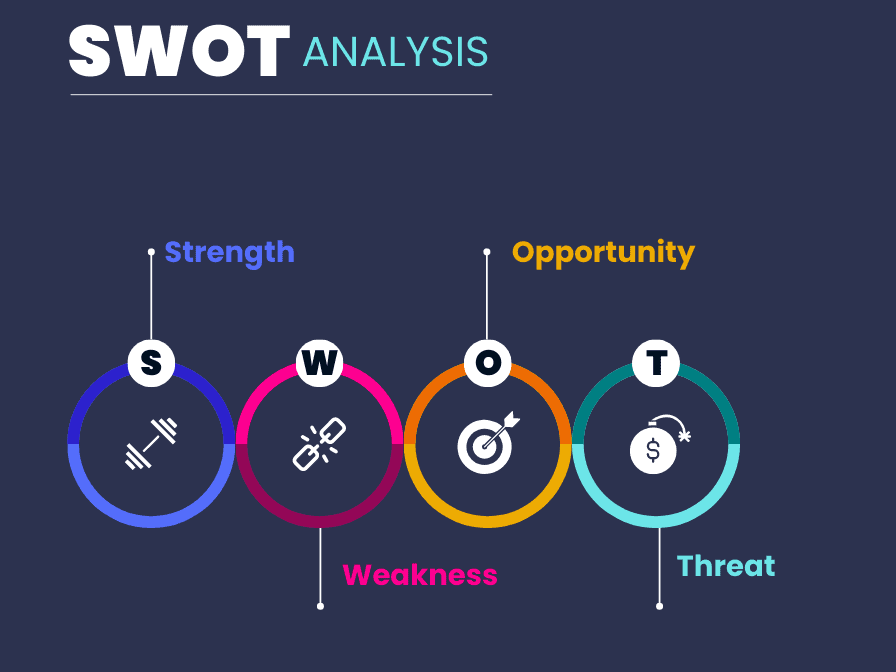A departmental goal inspires teamwork towards a shared mission and vision, clarifying its purpose and how it aligns with the company’s objectives. It promotes collaboration and supports overall organizational success. Are you confused about how to set department goals? Or is it that you have set goals but do not know how to go about reaching those goals? It is common to set a goal and forget about it until reminded during performance reviews. Working toward a deadline can make it challenging to achieve one’s full potential.
Research says 92% of people cannot achieve the goals they set. Though the setting is just the initial step, it is crucial.
Per surveys, visualizing goals can make one more confident in achieving them. You forget them until the day of the reviews and again set the goal for the next cycle, thus getting stuck in a loop.
If goals are forgotten or not achieved, it can result in failure and stagnation in development, which can have a negative impact on the entire company. This can lead to a lack of interest in the department and a reluctance to set and achieve goals creatively. To avoid this, it’s essential to set reasonable goals that can result in better employee performance reviews and ultimately contribute to the success of the organization. This can lead to increased job satisfaction, higher employee engagement, and improved retention rates.
Also Read: 7 Reasons Why Goal Setting Is Important
How to Prepare for Department Goals?
Setting goals is not enough; one needs to track their progress in achieving them at frequent intervals. When setting reasonable goals, it’s important to consider the necessary resources to achieve them within the given deadline. Any previous failures in meeting department goals should be taken as examples, and efforts should be made to make them effective and achievable in the next attempt. Goals serve as useful tools to make informed decisions, prioritize efforts, and ultimately achieve the company’s mission.
How to Set SMART Goals?
SMART goals are ones that are specific, measurable, achievable, realistic, and timely. Now, how to do it right with efficient use of resources and time? Let us find out.
- Specific: Your goal should be clear and specific. Avoid vague goals like “improve performance” and instead aim for something like “increase sales by 10%.”
- Measurable: Make sure your goal is measurable so you can track your progress and stay motivated. Use numbers, percentages, or other metrics to make your goal tangible.
- Achievable: Your goal should be realistic and achievable given your resources and timeline. Set a goal that challenges you, but don’t aim for the impossible.
- Relevant: Your goal should be relevant to your overall objectives and priorities. Don’t waste time on goals that don’t align with your bigger picture.
- Time-bound: Set a deadline for achieving your goal. This will help keep you on track and provide a sense of urgency.
- Break it down: Break your goal down into smaller, manageable steps. This will make it less daunting and easier to tackle.
- Get specific: Determine the specific actions you need to take to achieve your goal. This will help you stay focused and make progress.
- Write it down: Write your goal down and keep it somewhere visible. This will serve as a constant reminder and help you stay accountable.
- Share it: Share your goal with someone you trust. This will provide support and accountability.
- Celebrate: Celebrate your progress along the way and don’t forget to reward yourself when you achieve your goal. Positive reinforcement can help you stay motivated and on track.
Also Read: How to Implement SMART Employee Goal Setting in Your Company
Strategies to Define SMART Business Goals
Now that you have a clear idea of setting smart business goals, know the strategies to establish them right. Create objectives that focus on critical business areas. Analyze the opportunities well, identify the goals that can be challenging, and align with the business goals. One of the effective methods for setting department goals that are smart is:
SWOT Analysis
Conducting a SWOT analysis is an excellent way to analyze business performance and work on the area of improvement effectively. SWOT stands for:
- Strength: Identify the areas where the business performs well. Identify the components and assets that are strong and can help to get an edge over the competitors.
- Weakness: Analyze deeply to understand what’s not working for the business. Look for the components that tend to decrease the value.
- Opportunity: Examine the external opportunities that can be helpful for the business. Look for business growth and the market change you want to focus on.
- Threat: What are the external factors that can threaten the business? Are there any troubles that can impact business operations? As consumer demand changes, a business may face new challenges and threats from competitors.
Set and Achieve Goals per the Department
There’s nothing better than planning over-achievable goals that equal your business success. Setting objectives demands focusing on what a business needs to tackle in the current year.
The main thing lies in picking the goals that hit realistically and help drive the business to the next level, even in economically challenging situations.
Ensure the following to set achievable department goals:
-
- The goals should align with company objectives
- List the goals per employee and department to set the priorities
- Use KPIs that can boost the accountability of the goals
- Invite the employees to set their goals so that you can review them together during their performance reviews
- Break big goals into smaller ones to bring consistency
- Set SMART goals that are specific, measurable, achievable, time-based, and set in real-time
- Foster a healthy dynamic in every department
- Identify the workers falling short and help them achieve success in the future
90% of studies show specific and challenging goals can trigger better performance than easy or try-your-best goals. It requires motivation and persistence to achieve positive goals compared to vague ones.
Also Read: 7 Steps to Setting Workplace Goals and Making Them Happen
1. HR Department Goals
If you are in an HR department, you must know how hard it is to set goals that align with workforce trends, budgets, and others. Check the means available and set short-term goals to achieve. The goals of the HR department should set an example for other departments, which may find it challenging to set goals. You can also check performance reviews to set the right goals for this department.
Some HR goals are:
- Speeding up the hiring process using the latest tools
- Increasing the current employee retention rate to reduce employee turnover
- Trying to increase the number of upskilled employees by 20% in the coming months
2. Marketing Department Goals
The marketing department’s goals are to increase company leads, boost brand awareness, and try unique and innovative things to launch a new product. Marketing has many facets, from technical to creative, in setting goals. It is often challenging to set goals for a creative department. A few samples of goals that can be set for the marketing department are:
- The marketing department should set goals to drive website traffic by almost 50% with quality blogs
- Redesigning landing pages can earn more click-through rates for the website
- There should be an increase in the sales funnel and more use of targeted email to reach the potential group of customers
3. Sales Department Goals
Setting clear and measurable goals is essential for the success of any sales department. The goals should be tailored to the size of the department, the products or services being sold, and the most effective ways to generate leads.
For example, a sales department might set a goal to increase monthly revenue by 15% by implementing strategies such as cross-selling and customizing sales, as well as learning more about the products to better serve customers.
Another goal could be to limit the number of deals per unit over the next few months, which could help focus efforts on more profitable sales.
It’s important to consider the strengths and weaknesses of individual team members when setting goals and to ensure that everyone is motivated and working together toward a common goal. By encouraging healthy competition and collaboration, sales departments can achieve both individual and team success.
Key Points to Note Before Setting Department Goals
Setting Achievable Goals for Work-Life Balance
Incorporating workplace goals into daily activities can be a challenging task. It’s important to set clear and specific goals, prioritize tasks, and allocate time to turn goals into achievable actions. This can help maintain a healthy work-life balance.
Get Clarity on the Team Structure
Understand the capabilities and interrelationships of your team before setting work goals. Identify the support that can be provided to measure goals and process them to run projects smoothly.
Focus on Coordination Among the Team
For every goal, there are things that are in your control; you have to plan for the rest. It is the skill and collaboration of a department that will help in achieving goals. Better coordination can prevent the team from missing deadlines. This is how you can set smart business goals.
Consider the Big Picture
Efficiency and productivity in the workplace are crucial for career progression and success in the long term. It’s important to focus not only on immediate tasks but also on gaining valuable experience and skills that can be applied to future opportunities.
Also Read: How to Set the Right Employee Development Goals
Continued education and training are key to expanding responsibilities and advancing in one’s career. Seeking out such opportunities can help individuals stay relevant and competitive in their field, and increase their chances of getting promoted.
Compare Goals with Your To-Do List
Setting clear and measurable goals is essential for the growth and success of any business. However, it can be challenging to stay focused on these goals when urgent assignments and client demands arise.
For example, continuing professional education is crucial for boosting proficiency and experience, but it often falls short due to time constraints and competing priorities.
To overcome this challenge, it’s important to align annual goals with daily to-do lists. This can help ensure that daily tasks and urgent assignments are moving the team toward the larger goals and targets set for the year.
By prioritizing and balancing urgent tasks with long-term goals, businesses can achieve sustained growth and success.
Frequently Asked Questions
Q1. How do SMART goals help with professionalism?
Ans. SMART goals can be summarized as follows:
- They help achieve professional goals
- They are measurable, achievable, specific, time-bound, and correct
- They give a framework to track progress and mark the required revisions
- They help one stay focused to achieve business goals
Q2. What is the need for the strategy for goals?
Ans. After you set your goals, don’t try to achieve them together, as it can be overwhelming, leading to failure. Instead, analyze the objective, evaluate the sources available, and plan on how to tackle it considering the priorities. In other words, you need to have a proper strategy in place.
Q3. Which strategy can help in achieving business goals?
Ans. SWOT analysis can clarify business goals. It helps analyze what’s working and where the business can improve more to yield better. That way, you understand which aspects of the business need attention and bring in more opportunities for the company.














